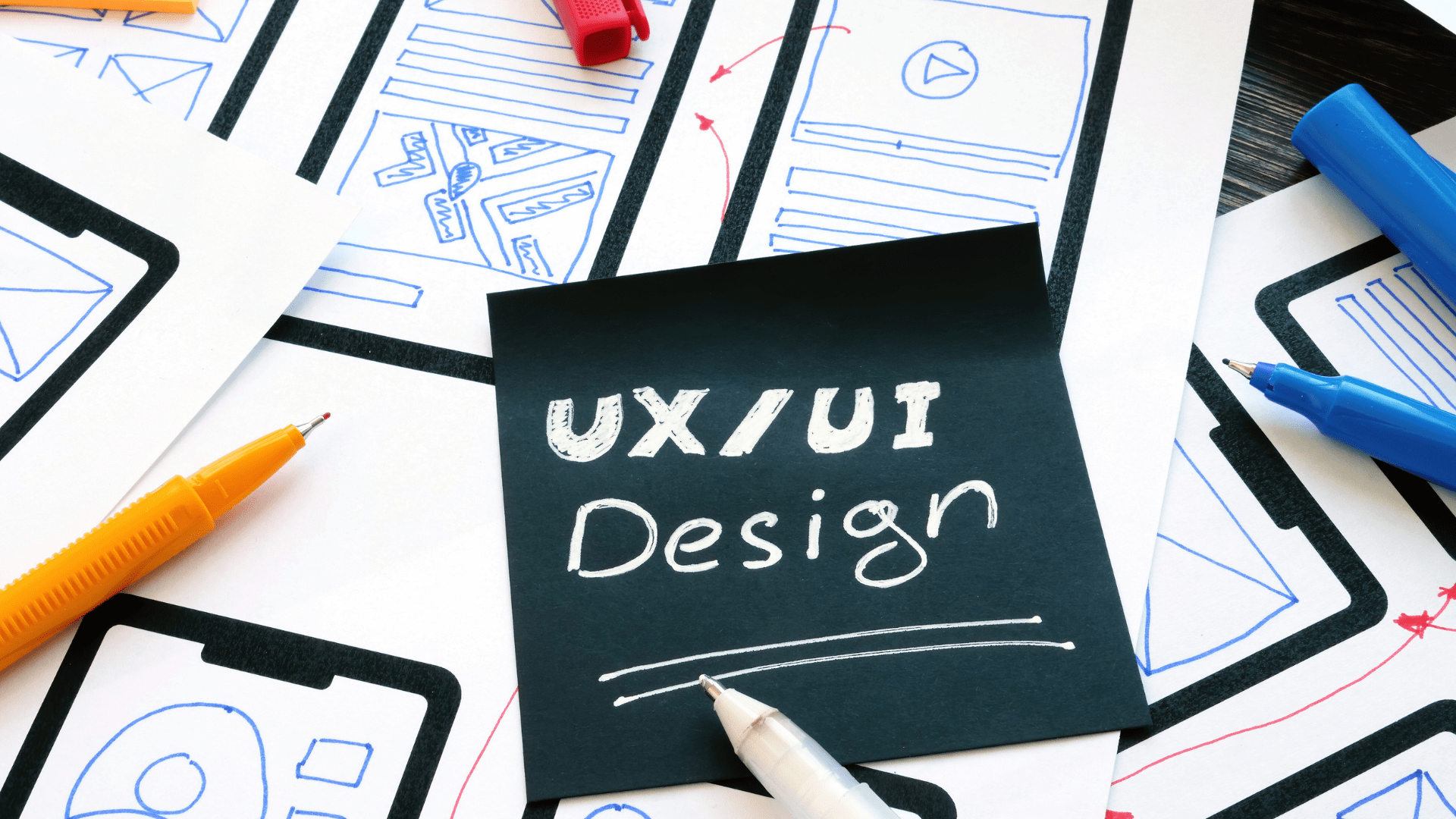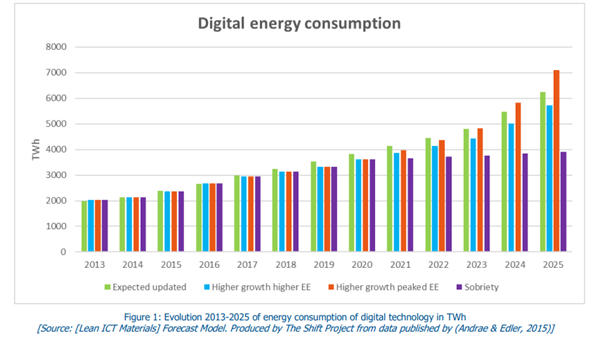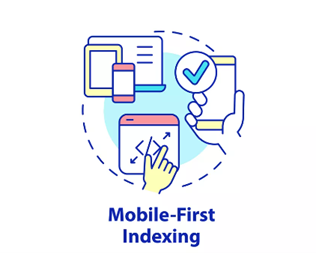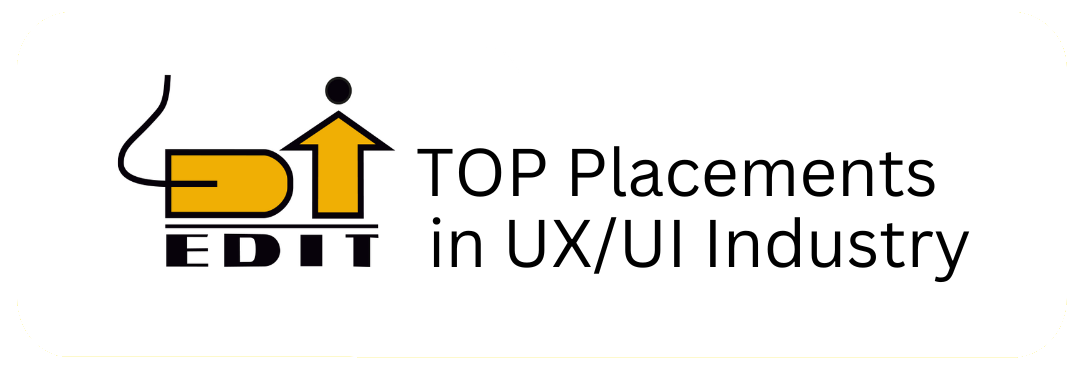UX LENS
News and Tips

Sustainable Design Principles
Exploring Sustainable Design Principles in UX Design: Creating Eco-Friendly Digital Experiences
The Lean-ICT report states that in 5 years ( 2013 – 2018) the GHB (Greenhouse Gas) emission contributes to 2.5% to 3.7%. This is similar to the emission produced by the Airline industry and it is predicted to double by 2025.

The data points to this 3 key points:
- Accelerated growth as trends in consumption (traffic, terminals) and energy efficiency (networks and data centres) continue, leading to an E-ratio of more than 4.5% in 2025.
- An explosion if progress in energy efficiency slows down. However, this risk is real because current technologies are approaching their limits and future technologies (quantum processors for example) will not be industrialised by this deadline. Under these conditions, an E-ratio of 6% in 2025 is likely.
- A stabilisation of energy consumption by the digital technologies if we manage to control our consumption practices (more selectivity in video use, slightly longer storage life for smartphones), despite the materialisation of the risk of a lower increase in the energy efficiency of infrastructures. Under these conditions, energy consumption increases by only 1.5% per year and the E-ratio remains around 3.2% until 2025. However, in this scenario, it is by no means a question of muzzling the digital transition: traffic growth remains very high (17% in data centres, 25% on mobile networks), likewise for purchases of supported terminals (1.5 billion smartphones sold in 2025, the same level as in 2017).
The above data clearly states the need of sustainability design principles that will help in decreasing the energy consumption. This can be done through sustainable design practices and in the long run will help in building efficient design models.
What are the core principles of sustainable UX design?
- Simplicity: Streamlining interfaces to eliminate unnecessary elements reduces cognitive load and energy consumption.
- Efficient Resource Use: Optimising code, minimising server requests, and reducing file sizes contribute to lower energy consumption and faster load times.
- Responsiveness and Accessibility: Ensuring accessibility for all users not only fosters inclusivity but also reduces the need for additional resources to accommodate diverse needs.
- Longevity and Durability: Designing with longevity in mind minimises the frequency of updates and reduces electronic waste.
- Modularity and Scalability: Creating modular components promotes scalability, facilitates maintenance, and reduces redundancy in development efforts.
- Minimalism and Decluttering: Removing unnecessary features and content not only improves usability but also reduces energy consumption and environmental impact.
- Energy Efficiency: Incorporating energy-saving features such as dark mode options and low-power modes reduces device energy consumption.
- User Education and Empowerment: Providing users with information and tools to make sustainable choices empowers them to reduce their environmental footprint.
- Feedback and Iteration: Gathering user feedback and iterating on designs ensures that products remain relevant, reducing the likelihood of premature obsolescence.
- Lifecycle Considerations: Considering the environmental impact of the entire product lifecycle, from production to disposal, helps identify opportunities for reducing resource consumption and waste.
Techniques for Sustainable design principles:
To foresee the inevitable design sustainability challenges and :employ techniques to ensure sustainability in the development cycle. These techniques are:
- User Research:
User research is done through surveys, meticulous user interviews, focus groups to understand the user perceptions. This helps the designer to take better design decisions and connect the specific user behaviours with eco-friendly design
- Empathy Mapping:
Understanding the user’s concern regarding the sustainability of design helps in creating design that addresses user issues of environmental and social. This can be done through empathy maps. Empathy maps are done through capturing user pains, emotions and thoughts.
- Traditional Empathy Maps
Traditional empathy map deals help to understand the user as a whole, not chronological or sequential.

- Across Quadrants:
Human beings are complex people and this can be reflected in empathy maps of every quadrant that consist of positive and negative points. Thus making it difficult to comprehend. The solution is not to comprehend but to pick one quadrant and focus on it. If then also you feel that you are unable to put it in any of the 4 quadrants then more research is needed to understand the user better.
- One User vs. Multiple-Users Empathy Maps:
The empathy map helps in capturing one or multiple users’ responses. One thing to be noted is that one user survey is done through one to one interaction or user log.
- Aggregated Empathy Maps:
The Aggregated empathy maps are created by taking interview transcripts of users and then creating multiple empathy maps for a user. After this, combining the maps in which users expressed similar things into a new empathy map. The resulting map is communicated as a persona instead of a single user.
Real-World Examples of Sustainable UX Design:
From minimalist interfaces to energy-saving features, numerous digital products exemplify sustainable design principles in action. Case studies showcasing the successful integration of sustainability into UX design can inspire and inform designers looking to incorporate similar practices into their work. By highlighting these examples, we can demonstrate the tangible benefits of sustainable UX design and inspire broader adoption within the industry.
Some of the examples are:
- Google Mobile-First Indexing:

The smooth experience in mobile platforms is done through mobile-first indexing.This helps in data efficiency and power consumption.
- Spotify Lite:

Lighter version of spotify for low internet connectivity users. This means, the user having 10MB storage provides the same functionality comparatively to Spotify user
- Facebook’s AutoPlay Video Setting:

Facebook provides an Autoplay video function that helps the user to control the data and energy consumption of Mobile.
What is the role of UX/UI designers in Sustainable Design?
The role of UX/UI designers in sustainable design is multifaceted and crucial for driving positive change towards a more environmentally conscious approach to digital product development. Here’s a breakdown of their role:
- Integrating Sustainability into Design Practices:
UX/UI designers incorporate sustainability principles through energy efficiency, resource optimization, and lifecycle impact when making design decisions.
- Educating Stakeholders:
Designers play a vital role in raising awareness about the importance of sustainable design among stakeholders, including clients, developers, and product managers. By advocating for sustainable practices and demonstrating the benefits of incorporating them into projects, designers can influence decision-making and prioritise sustainability in product development.
- Balancing User Needs with Environmental Impact:
UX/UI designers must strike a balance by using creative solutions in reducing energy consumption, waste, and resource usage.
- Designing for Longevity:
Designers can contribute to sustainability by creating products that are built to last. This includes designing for durability, scalability, and adaptability, as well as considering factors such as repairability and upgradability to extend the lifespan of digital products.
- Optimising Performance:
UX/UI designers can improve the environmental sustainability of digital products by optimising performance and reducing resource-intensive processes. This includes optimising code, minimising server requests, and designing lightweight interfaces that require fewer resources to load and operate.
- Promoting Conscious Consumption:
Designers have the opportunity to encourage users to engage in more sustainable behaviours through the design of digital products. This can involve providing feedback on resource usage, offering incentives for eco-friendly actions, and designing interfaces that promote mindful consumption and responsible use of digital resources.
- Collaborating with Cross-functional Teams:
Sustainable design requires collaboration across disciplines, including design, development, marketing, and product management. UX/UI designers must work closely with these teams from ideation and design to implementation and maintenance.
- Continual Learning and Improvement:
UX/UI designers must stay informed about emerging trends, technologies, and best practices. By continually learning and adapting their design approach, designers can ensure that they are incorporating the most up-to-date sustainability principles into their work.
Conclusion:
Embracing sustainable design principles helps in creating digital experiences that not only meet user needs but also minimise environmental impact. From simplicity and efficiency to accessibility and empowerment, each principle contributes to a broader narrative of environmental stewardship and responsible design practices. Together, let’s design for a greener future—one pixel at a time.
Placement of the week

Harshita Chippa - B Arch
HirePlusPlus – UI UX Designer
Switching from Architecture to UI/UX might seem tough, but it’s totally worth it. If you are into Graphic Design, UI/UX is your thing. It feels awesome to dive into the UX/UI field and work on real projects.
Accessibility Audit Tools
Responsive Design Practices
Sustainable Design Principles
Exploring Sustainable Design Principles in UX Design: Creating Eco-Friendly Digital Experiences
The Lean-ICT report states that in 5 years ( 2013 – 2018) the GHB (Greenhouse Gas) emission contributes to 2.5% to 3.7%. This is similar to the emission produced by the Airline industry and it is predicted to double by 2025.

The data points to this 3 key points:
- Accelerated growth as trends in consumption (traffic, terminals) and energy efficiency (networks and data centres) continue, leading to an E-ratio of more than 4.5% in 2025.
- An explosion if progress in energy efficiency slows down. However, this risk is real because current technologies are approaching their limits and future technologies (quantum processors for example) will not be industrialised by this deadline. Under these conditions, an E-ratio of 6% in 2025 is likely.
- A stabilisation of energy consumption by the digital technologies if we manage to control our consumption practices (more selectivity in video use, slightly longer storage life for smartphones), despite the materialisation of the risk of a lower increase in the energy efficiency of infrastructures. Under these conditions, energy consumption increases by only 1.5% per year and the E-ratio remains around 3.2% until 2025. However, in this scenario, it is by no means a question of muzzling the digital transition: traffic growth remains very high (17% in data centres, 25% on mobile networks), likewise for purchases of supported terminals (1.5 billion smartphones sold in 2025, the same level as in 2017).
The above data clearly states the need of sustainability design principles that will help in decreasing the energy consumption. This can be done through sustainable design practices and in the long run will help in building efficient design models.
What are the core principles of sustainable UX design?
- Simplicity: Streamlining interfaces to eliminate unnecessary elements reduces cognitive load and energy consumption.
- Efficient Resource Use: Optimising code, minimising server requests, and reducing file sizes contribute to lower energy consumption and faster load times.
- Responsiveness and Accessibility: Ensuring accessibility for all users not only fosters inclusivity but also reduces the need for additional resources to accommodate diverse needs.
- Longevity and Durability: Designing with longevity in mind minimises the frequency of updates and reduces electronic waste.
- Modularity and Scalability: Creating modular components promotes scalability, facilitates maintenance, and reduces redundancy in development efforts.
- Minimalism and Decluttering: Removing unnecessary features and content not only improves usability but also reduces energy consumption and environmental impact.
- Energy Efficiency: Incorporating energy-saving features such as dark mode options and low-power modes reduces device energy consumption.
- User Education and Empowerment: Providing users with information and tools to make sustainable choices empowers them to reduce their environmental footprint.
- Feedback and Iteration: Gathering user feedback and iterating on designs ensures that products remain relevant, reducing the likelihood of premature obsolescence.
- Lifecycle Considerations: Considering the environmental impact of the entire product lifecycle, from production to disposal, helps identify opportunities for reducing resource consumption and waste.
Techniques for Sustainable design principles:
To foresee the inevitable design sustainability challenges and :employ techniques to ensure sustainability in the development cycle. These techniques are:
- User Research:
User research is done through surveys, meticulous user interviews, focus groups to understand the user perceptions. This helps the designer to take better design decisions and connect the specific user behaviours with eco-friendly design
- Empathy Mapping:
Understanding the user’s concern regarding the sustainability of design helps in creating design that addresses user issues of environmental and social. This can be done through empathy maps. Empathy maps are done through capturing user pains, emotions and thoughts.
- Traditional Empathy Maps
Traditional empathy map deals help to understand the user as a whole, not chronological or sequential.

- Across Quadrants:
Human beings are complex people and this can be reflected in empathy maps of every quadrant that consist of positive and negative points. Thus making it difficult to comprehend. The solution is not to comprehend but to pick one quadrant and focus on it. If then also you feel that you are unable to put it in any of the 4 quadrants then more research is needed to understand the user better.
- One User vs. Multiple-Users Empathy Maps:
The empathy map helps in capturing one or multiple users’ responses. One thing to be noted is that one user survey is done through one to one interaction or user log.
- Aggregated Empathy Maps:
The Aggregated empathy maps are created by taking interview transcripts of users and then creating multiple empathy maps for a user. After this, combining the maps in which users expressed similar things into a new empathy map. The resulting map is communicated as a persona instead of a single user.
Real-World Examples of Sustainable UX Design:
From minimalist interfaces to energy-saving features, numerous digital products exemplify sustainable design principles in action. Case studies showcasing the successful integration of sustainability into UX design can inspire and inform designers looking to incorporate similar practices into their work. By highlighting these examples, we can demonstrate the tangible benefits of sustainable UX design and inspire broader adoption within the industry.
Some of the examples are:
- Google Mobile-First Indexing:

The smooth experience in mobile platforms is done through mobile-first indexing.This helps in data efficiency and power consumption.
- Spotify Lite:

Lighter version of spotify for low internet connectivity users. This means, the user having 10MB storage provides the same functionality comparatively to Spotify user
- Facebook’s AutoPlay Video Setting:

Facebook provides an Autoplay video function that helps the user to control the data and energy consumption of Mobile.
What is the role of UX/UI designers in Sustainable Design?
The role of UX/UI designers in sustainable design is multifaceted and crucial for driving positive change towards a more environmentally conscious approach to digital product development. Here’s a breakdown of their role:
- Integrating Sustainability into Design Practices:
UX/UI designers incorporate sustainability principles through energy efficiency, resource optimization, and lifecycle impact when making design decisions.
- Educating Stakeholders:
Designers play a vital role in raising awareness about the importance of sustainable design among stakeholders, including clients, developers, and product managers. By advocating for sustainable practices and demonstrating the benefits of incorporating them into projects, designers can influence decision-making and prioritise sustainability in product development.
- Balancing User Needs with Environmental Impact:
UX/UI designers must strike a balance by using creative solutions in reducing energy consumption, waste, and resource usage.
- Designing for Longevity:
Designers can contribute to sustainability by creating products that are built to last. This includes designing for durability, scalability, and adaptability, as well as considering factors such as repairability and upgradability to extend the lifespan of digital products.
- Optimising Performance:
UX/UI designers can improve the environmental sustainability of digital products by optimising performance and reducing resource-intensive processes. This includes optimising code, minimising server requests, and designing lightweight interfaces that require fewer resources to load and operate.
- Promoting Conscious Consumption:
Designers have the opportunity to encourage users to engage in more sustainable behaviours through the design of digital products. This can involve providing feedback on resource usage, offering incentives for eco-friendly actions, and designing interfaces that promote mindful consumption and responsible use of digital resources.
- Collaborating with Cross-functional Teams:
Sustainable design requires collaboration across disciplines, including design, development, marketing, and product management. UX/UI designers must work closely with these teams from ideation and design to implementation and maintenance.
- Continual Learning and Improvement:
UX/UI designers must stay informed about emerging trends, technologies, and best practices. By continually learning and adapting their design approach, designers can ensure that they are incorporating the most up-to-date sustainability principles into their work.
Conclusion:
Embracing sustainable design principles helps in creating digital experiences that not only meet user needs but also minimise environmental impact. From simplicity and efficiency to accessibility and empowerment, each principle contributes to a broader narrative of environmental stewardship and responsible design practices. Together, let’s design for a greener future—one pixel at a time.
Accessibility Audit Tools
Responsive Design Practices
User Onboarding Flows
Placement of the week

Harshita Chippa - B Arch
HirePlusPlus – UI UX Designer
Switching from Architecture to UI/UX might seem tough, but it’s totally worth it. If you are into Graphic Design, UI/UX is your thing. It feels awesome to dive into the UX/UI field and work on real projects.
